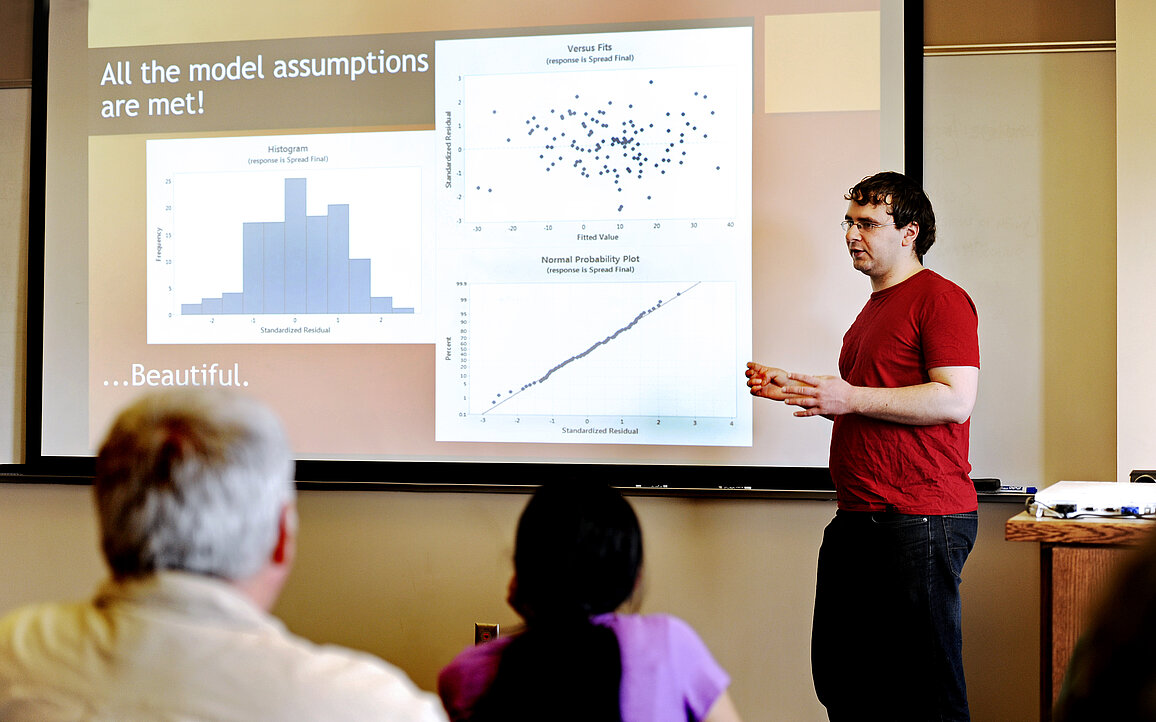
There are excellent opportunities for a person with a degree in statistics. Major corporations and most government agencies continually look for talented individuals with this type of education. Since even greater job opportunities are open to those with advanced statistical training, many undergraduates proceed directly to graduate work in statisitcs. The background of students entering the graduate program in statistics varies widely and requires only a quantitative orientation, one year of calculus, and matrix algebra. Many students combine statistics with areas such as business, education, economics, biology, or other fields where statistical training is greatly valued.
Job opportunities are varied. A statistician may:
- Consult in the design and analysis of clinical studies, evaluating new pharmaceutical agents;
- Design experiments for agricultural, ecological, environmental, or energy-related studies;
- Determine mortality, morbidity, and accident rates for an insurance company;
- Serve as an opinion pollster for a public relations firm or a television network;
- Develop theories of learning and behavior in conjunction with pyschologists;
- Determine optimal combinations and evaluate performance of various chemicals in industrial setups;
- Conduct reliability and quality control studies in various industries;
- Develop econometrics, time series, and forcasting models for determining the cause and effects of various socio-economic variables on the society.
In all of these areas and many others, statisticians work closely with other scientists and researchers to develop new statistical techniques, adapt existing techniques, design experiments, and direct analyses of surveys and retrospective studies.


